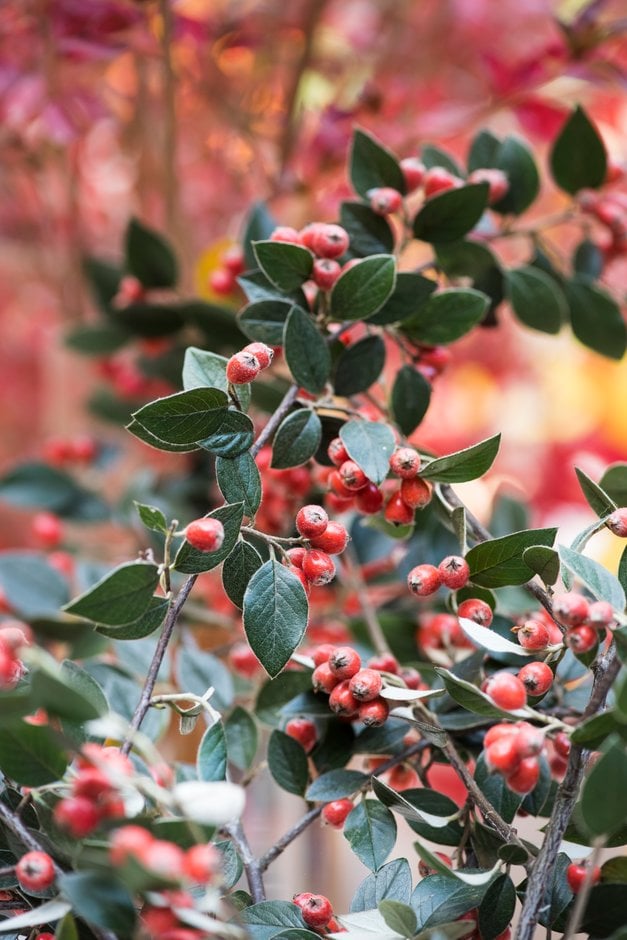Cotoneaster franchetii
Franchet's cotoneaster
Evergreen or semi-evergreen shrub up to 3m high with arching branches bearing leaves 3.5cm long, glossy grey-green above with white beneath, and in early summer produces clusters of 5-15 white flowers, tinged pink, followed by oblong orange-scarlet fruits; the flowers are attractive to bees
Size
Ultimate height
2.5–4 metresTime to ultimate height
10–20 yearsUltimate spread
2.5–4 metresGrowing conditions
Moisture
Moist but well–drained, Well–drainedpH
Acid, Alkaline, NeutralColour & scent
| Stem | Flower | Foliage | Fruit | |
| Spring | Grey Silver Green | |||
|---|---|---|---|---|
| Summer | White Red | Grey Silver Green | ||
| Autumn | Grey Silver Green | Orange Red | ||
| Winter | Grey Silver Green | Orange Red |
Position
- Full sun
- Partial shade
Aspect
South–facing or East–facing or North–facing or West–facing
Exposure
Exposed or Sheltered Hardiness
H6Botanical details
- Family
- Rosaceae
- Native to GB / Ireland
- No
- Foliage
- Evergreen or Semi evergreen
- Habit
- Spreading branched
- Potentially harmful
- Fruit are ornamental - not to be eaten. Wear gloves and other protective equipment when handling. Pets: Fruit are ornamental - not to be eaten - see the HTA guide to potentially harmful plants for further information and useful contact numbers
- Genus
Cotoneaster can be deciduous or evergreen shrubs or small trees, with simple, entire leaves and clusters of small white or pink flowers in spring and summer, followed by showy red, purple or black berries
- Name status
Correct
- Plant range
- China (Yunnan)
How to grow
Cultivation
Grow in full sun or partial shade in any soil that is well-drained; for hedging plant 40-60cm apart
Propagation
Propagate from seed (tree/shrub) or by semi-ripe cuttings in late summer
Suggested planting locations and garden types
- City and courtyard gardens
- Cottage and informal garden
- Low Maintenance
- Hedging and screens
Pruning
Pruning group 8 (early-flowering evergreen shrubs) - usually no pruning required
Pests
May be susceptible to scale insects, cotoneaster webber caterpillar, aphids and woolly aphid
Diseases
May be susceptible to fireblight and honey fungus
Get involved
The Royal Horticultural Society is the UK’s leading gardening charity. We aim to enrich everyone’s life through plants, and make the UK a greener and more beautiful place.
